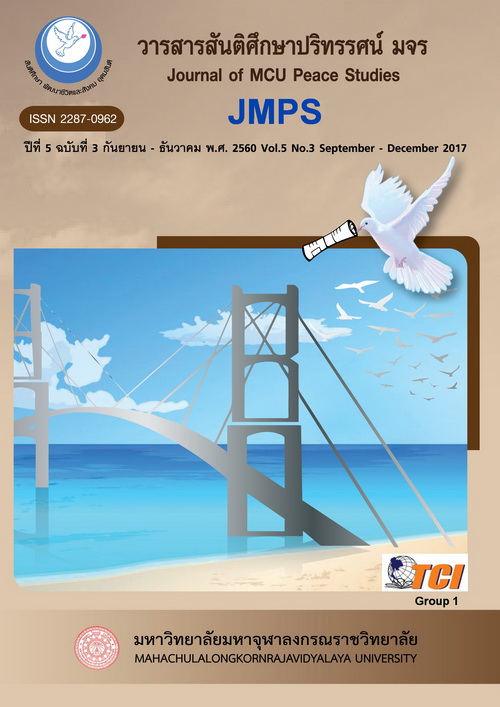Vinayãlangkãratikã Part II : Translation and Analytical Study
Main Article Content
บทคัดย่อ
This research is a documentary research of which the objectives are 1) to translate the Sub-Commentary (Tika) of Vinayãlaṅkãratĩkã Part II from Pali version into Thai version; 2) to study and analyze the Sub-Commentary of Vinayãlaṅkãratĩkã Part II in terms of its history, composition pattern, language style, and its relationship with other Sub-Commentaries, and 3) to study and analyze the content of the Sub-Commentary concerning judgements of disciplines of Buddhist monks presented in the Sub-Commentary. The research results are as follows;
The Sub-Commentary of Vinayãlaṅkãratĩkã Part II consists of explanation of judgements in 8 topics, which are: 1) Monks cohabitation tradition, with preceptor functions, for example. 2) Sharing of 4 basic living factors. 3) Kathina robe-making ceremony. 4) Durable articles exchange. 5) Lawsuit accusation. 6) Severe offence acquitting procedure. 7) Minor and major religious rites. 8) Other trivial matters. This Sub-Commentary was composed by a Buddhist monk of Myanmar named Munindaghosa whose works were outstanding at scriptures outside the Tipitaka by the year of 2190 B.E. in the reign of King Luanmengtrã or Sirisudhammarãjãmahãdhipati, the 10th King of the Yong-an Monarch at Tiriya Mountain. The composition pattern of this Sub-Commentary was focused on clear content and consonant by using evidence from Tipitaka to support wording as well as to make the Sub-Commentary more reliable, more academic and more useful in order to preserve correction of discipline (Vinaya) legislated by the Lord Buddha. Moreover, it was useful for Thai Buddhist monks to learn Vinaya Pitaka in the future and to use as a reference scripture to support decision making in areas of those 8 topics. If Buddhist monks were able to understand disciplines well, they could behave correctly and would finally attain highest Buddhist virture , so-called–Nibbãna.
Article Details
ทัศนะและความคิดเห็นที่ปรากฏในบทความในวารสาร ถือเป็นความรับผิดชอบของผู้เขียนบทความนั้น และไม่ถือเป็นทัศนะและความรับผิดชอบของกองบรรณาธิการ ยินยอมว่าบทความเป็นลิขสิทธิ์ของวารสาร


